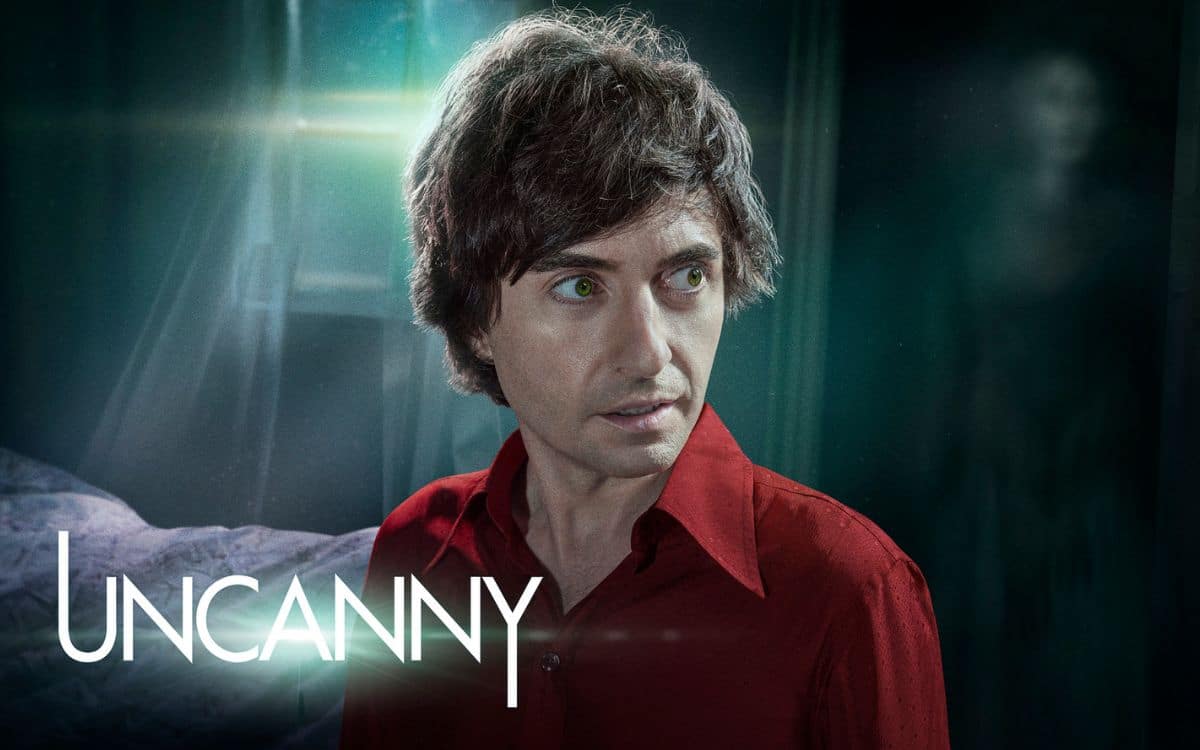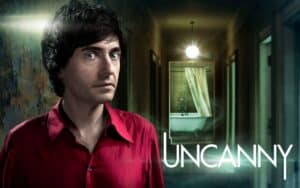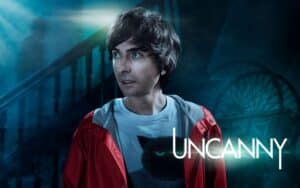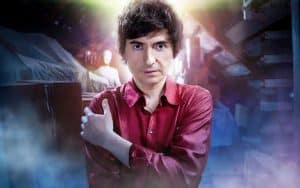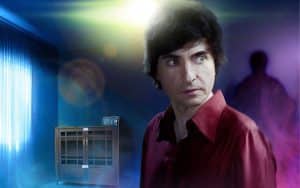Uncanny’s first television case sees Danny Robins investigating a strange Cambridgeshire haunting. GAYLE FIDLER gives us the lowdown on Miss Howard
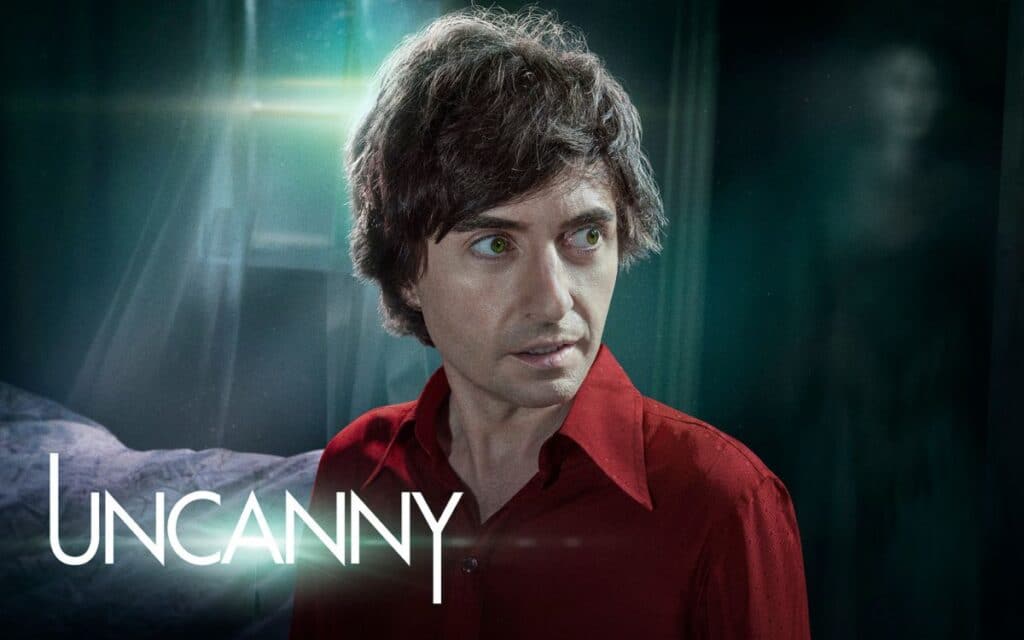
On Friday 13 October 2023, the first television episode of Uncanny, by writer, broadcaster and journalist Danny Robins aired on BBC Two.
The series had been long awaited by fans of the podcast of the same name. Which was first broadcast in 2021, following the success of The Battersea Poltergeist podcasts.
In the few short years that Robins has been writing and presenting the Uncanny episodes, a loyal legion of followers (the Uncanny community) has evolved on social media. Discussing cases, theories and trying to look for explanations. The tag line for the show is “Are you Team Sceptic or Team Believer?”
The Uncanny community and the panel of experts chosen for the show fall into one of the two categories.
Meet Miss Howard
The First Episode, Miss Howard sticks to the familiar feel of the podcasts. The opening credits build the spooky atmosphere with the haunting theme tune “Don’t Have Nightmares” by indie rock band, Lanterns on the Lake.
Robins is depicted in dreamlike, haunted locations wearing his trademark red coat. The whole feel is of a dark fairy tale. Our intrepid explorer stares at the screen, with foreboding woods behind him.
However, Uncanny is anything but a dark fairy tale. The first episode is told in a similar way to a good old fashioned ghost story. We meet our witness Cate, sitting in a studio looking nervous as she recounts her experiences to Robins.
There is no flashing tech or gimmicky equipment. No screaming crew members or suspect mediums. This is a journalistic investigation into the experiences of Cate, helped along with advice from Team Sceptic, psychologist Dr Ciarán O’Keeffe and Team Believer, parapsychologist Evelyn Hollow.
The case of Miss Howard starts in the 1970s, when Cate lived in her childhood home. A large imposing building in the village of Melbourn, Cambridgeshire. Cate describes it as a traditional English country village. The house had originally been two semi-detached properties and were converted into one building by her father.
In her original email to the show, which Robins reads out, Cate wrote. “I would love to get some peace on this. It has caused me pain and terror for years. I would love the nightmares to stop.”
Cate states that despite her experiences, she does not believe in ghosts. A phrase that listeners to the podcasts will be familiar with.
Cate recounts how her experiences in the house started off as a feeling of cold panic. She would have a sense that she was being followed around the building. Clocks started acting strangely, on one occasion ticking backwards while she watched.
She began to see the form of a woman, initially hazy but as time went on it became more defined. Eventually becoming a full flesh and blood like person with distinguishable features.
Robins is compassionate in his interviewing skills. He oozes empathy and creates a safe space for Cate to recount her worst nightmares. There is no judgement or prejudice. It feels like Cate is talking to a therapist as Robins listens attentively. If anything, Cate is hardest on herself. Revealing that she has told very few people about her experiences in the house, for fear of ridicule.
As the sightings of Miss Howard intensify, we find out that Cate never consciously named her that. She just knew that was what she was called. As if Miss Howard herself told her.
Robins goes back to his panel of experts to ask for their initial opinions on the case. Both Hollow and O’Keeffe go down the same topic line, with very different theories. Could the building work have disturbed something in the house?
Back in the studio with Cate, things, however, start to take an even darker turn. Once Cate had grown up, desperate for answers about her childhood horror, she took to searching the internet for clues. In 2010, she found a blog post on a local village history site. It was written by a woman who had lived at the house with her two daughters, prior to Cate and her family.
“We shared our house with a ghost, who we believe was Miss Howard.”
Robins locates the two sisters mentioned in the blog (Lisa and Jane) and brings them to the studio. He mentions that they were kept apart from Cate so not to contaminate the stories.
The sisters describe being frightened of the house and seeing Miss Howard on many occasions. Often in their room at night. They even describe physical contact with the entity. Their version of events is similar to Cates experiences. The fear on their faces as they relive what happened is palpable.
The panel of experts pass judgement
Back with his panel of experts, Robins asks for their thoughts on how all three women saw the same person with the same name, a decade apart. We have a light hearted moment, as Robins thinks he has stumped O’Keeffe. But it is not to be, the Doctor as always, has a rational explanation. The girls lived in the same village around the same time. They may have subconsciously picked up on information.
O’Keeffe introduces Robins to The Phillip Experiment. This was research undertaken in the 1970s in Toronto. The researchers created their own fictional ghost with a full backstory. Then they attempted to communicate with it. The results saw some classic séance phenomena being produced, including movement and noises.
Robins attempts to create his own Miss Howard with a fictional story and sees some similar results, with the glass used for a séance, seemingly moving of its own accord. Enter psychologist, Professor Chris French.
French explains to a somewhat disappointed looking Robins, that he needs to remember that his fake séance could not have contacted the ghost of Miss Howard. As they made her forename and backstory entirely up.
As the reality of the failed séance sets in, French tells Robins that the Phillip Experiment gives more credence to a sceptical explanation for some of the phenomena. Just because you witnessed something doesn’t necessarily make it true.
“A mic drop moment from Team Sceptic” Danny chuckles to himself.
But it doesn’t end there. We have another phantom thrown into the mix. Cate mentions a possible time slip sighting in the house. A man holding a candlestick, dressed in bedclothes who interacted with Cate.
We also meet local history researcher Mavis Howard (no relation to THE Miss Howard) who looks rather perplexed as Robins asks her for help in solving a ghost story. A session in the local library throws up some old photographs which Cate believes could be Miss Howard.
The show ends on a Team Believer mic drop moment. Robins begins to unravel the mystery of Miss Howard and finds further evidence of a woman of the same name living in Cates house.
As with all the Uncanny cases, Miss Howard has been handed over to the Uncanny community to do their own research and hopefully in time the mystery of who Miss Howard was may be solved.
Uncanny is a wonderful paranormal documentary. Good story telling with a healthy mix of realism. I would highly recommend for anyone who wants a sensible, yet entertaining insight into the paranormal.
Tell us your thoughts on this episode of Uncanny Case 1: Miss Howard in the comments section below!

